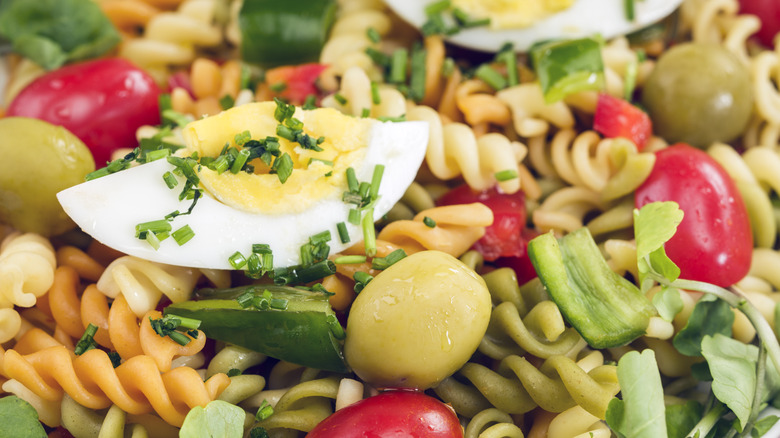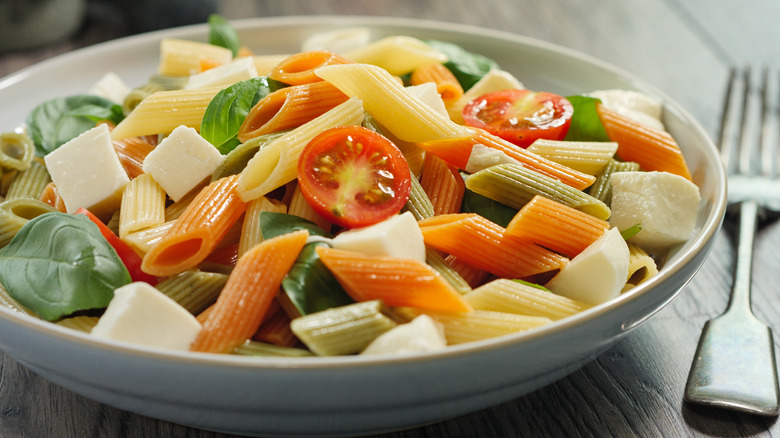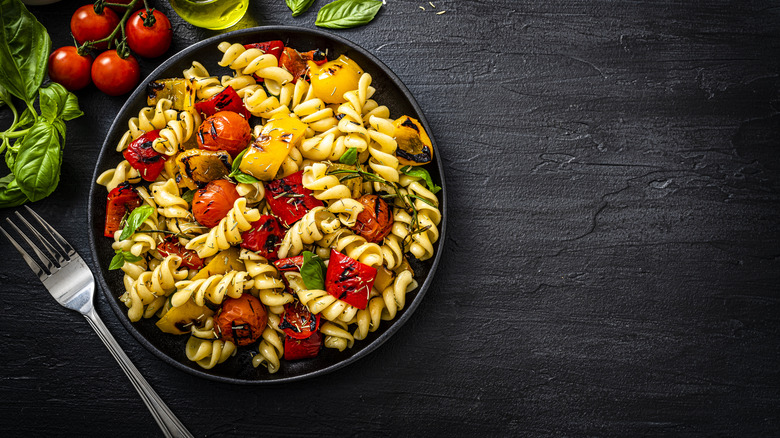We Finally Know If Tri-Color Pasta Actually Tastes Different Based On Color
When you are ready to make a quick pasta salad for dinner, you can reach for regular rotini, or you can add a splash of color to your dish with tri-color pasta. If you are wondering if the tri-color pasta will change the flavor of the dish, it won't! Tri-color pasta comes in three different colors — plain, green, and red. While the colors give the pasta a different appearance, they do not affect the flavor of the pasta, since that is primarily derived from the type of wheat used to make it and any accompanying sauces or ingredients in the dish.
Most pasta is made from durum wheat, but there are alternatives made from whole wheat flour or even gluten-free options. Tri-color pasta is also made from these types of wheat, but the added colors are derived from natural ingredients, such as spinach powder for the green color and tomato powder or paste for the orange or red hue. These ingredients are incorporated into the pasta dough, and they do not add significant flavor to the final product.
Why the different colors?
The purpose of tri-color pasta is primarily aesthetic, since the different colors add visual appeal to your meal. Tri-colored pasta is often used in salads, pasta dishes, and other recipes to create a vibrant and colorful presentation. While the different colors do not alter the taste significantly, they can enhance the overall dining experience by adding some flair to your meal.
Tri-color pasta does not have a different texture compared to regular pasta, either. This is also determined by the type of wheat used in the pasta dough, the amount of time you cook the pasta, and the amount of water used. Tri-color pasta is available in various shapes, though, and each of those shapes can have a different texture. They can also change the visual element of your dish. For instance, rotini has a spiraled shape, while penne is characterized by its tube shape with diagonally-cut ends. These will feel different and the pasta sauce will stick to them in different ways. The type of pasta you choose can also influence the texture of your dish.
The nutritional value of tri-color pasta
In terms of nutritional content, regular pasta and tri-color pasta are very comparable in their fat content, calories, and carbs because they are both made from similar ingredients. Tri-color pasta may offer slightly more nutritional benefits because of the added vegetables in the dough mix, since spinach is high in vitamins A, C, and K, as well as minerals like iron and calcium. Tomato adds traces of lycopene to the pasta. However, it's important to note that the amounts of these added ingredients are relatively small, so the nutritional impact is not great. It would be better to simply eat spinach or tomatoes separately if better nutrition is the goal.
Whole wheat pasta has more nutrients than regular pasta, according to Yahoo, so it's healthier. Pasta made from chickpeas is also a better option for people looking to add some healthier alternatives to their pasta dishes, according to Healthline. Unfortunately, these types of pasta do not come in tri-colors because the added ingredients of spinach or tomato powder to make those colors do not mix well with whole wheat or chickpeas. You can get gluten-free tri-color pasta, though.


